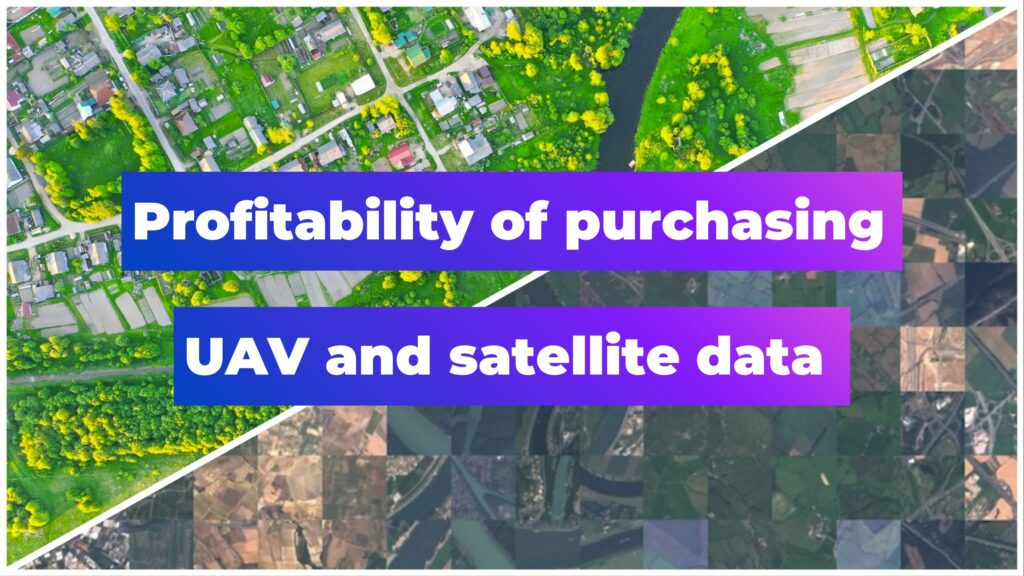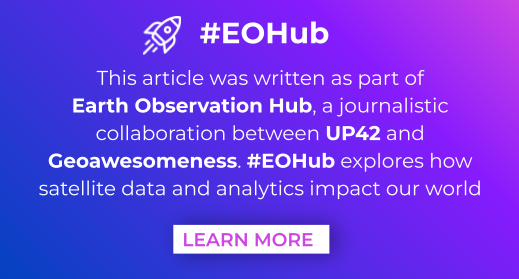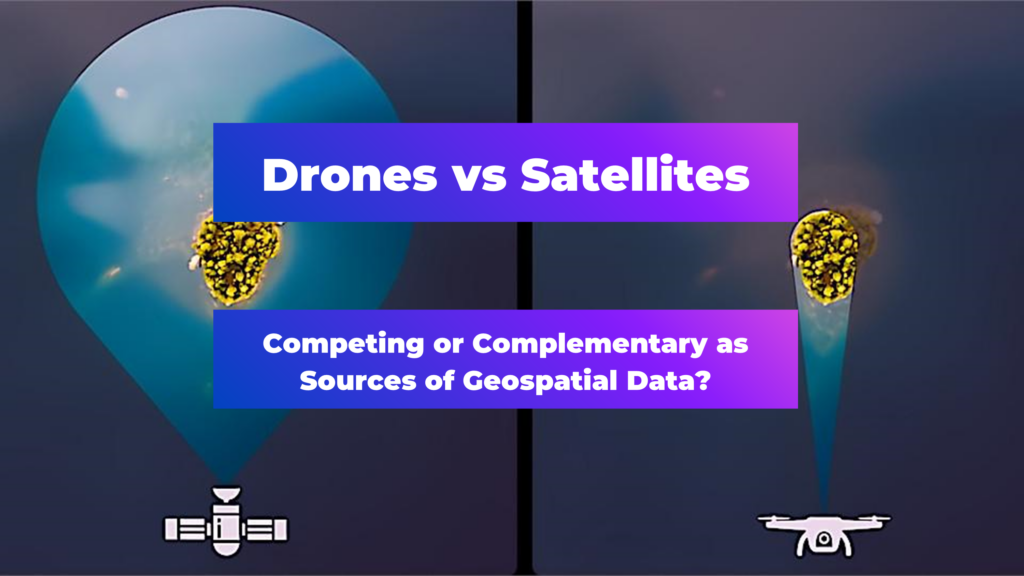
Bridging the Gap: How Buying Satellite and Drone Data is Evolving
Editor’s note: This article was written as part of EO Hub – a journalistic collaboration between UP42 and Geoawesomeness. Created for policymakers, decision-makers, geospatial experts and enthusiasts alike, EO Hub is a key resource for anyone trying to understand how Earth observation is transforming our world. Read more about EO Hub here.
Those working with Earth observation data have always been presented with two options: the detailed precision of drones or the expansive reach of satellite imagery. Since most projects face some form of constraints, whether in the form of budget limitations or the logistical challenges of sourcing data from multiple providers, many have had to settle for one type of data over the other. This can affect their scope and potential—satellite data may not provide sufficient detail, while drones might not be practical for the scale of the project.
However, the industry is currently undergoing a significant shift, and these challenges are being addressed head-on. Accessing comprehensive geospatial data is about to become more streamlined—and more accessible—than ever before.
A Comparison of Satellite and Drone Data
Before considering how their procurement differs, it’s worth remembering what sets these two powerful data sources apart in terms of their qualities and applications.
Satellite data provides a continuous, broad overview of the Earth’s surface, which is advantageous for large-scale and long-term monitoring projects like vegetation mapping and environmental management. The resolution of satellite imagery varies: Open-source data may be around 10 meters per pixel, while premium services can offer resolution down to 30 centimeters per pixel—but at a higher cost, ranging on average from $20 to $30 per square kilometer for tasked data. Satellites’ ability to operate is unimpeded by weather conditions—although the quality of images can be affected by cloud cover. Satellites also offer the valuable ability to analyze historical data, or monitor an area of interest long-term, through frequent revisits.
In contrast, drone data offers higher resolution images, sometimes down to less than 1 centimeter per pixel. This allows more precise and detailed analysis of specific areas, making drones ideal as an engineering tool. Drones can also be deployed rapidly, and provide greater control over data collection—ideal for time-sensitive applications. In contrast to satellites, drones are not affected by cloud cover; however, it may not be possible to operate them in adverse weather conditions or in some jurisdictions. They are often cost-effective for small, targeted missions, but will prove far costlier for expansive projects.
As can be seen, each technology is uniquely suited to different aspects of geospatial analysis, and the decision to use drone or satellite data will typically depend on the project’s scope, the detail required, and available budget. However, by combining both data sources, truly comprehensive insights can be achieved: for instance, in disaster response, satellite imagery can pinpoint areas of concern, and drone imagery can then be deployed to aid rescue missions. In construction, satellites can assist with project oversight while drones can provide engineering measurements. In environmental management, satellites can track changes over time, whereas drones can assess specific surface features or polluting infrastructure. This dual approach is key in enabling targeted and efficient interventions on the ground.
Acquiring the data
Buying both satellite and drone data has traditionally been a complex process, but recent advancements have streamlined these transactions significantly.
Buying Satellite Data:
In the past, satellite data could only be purchased directly from satellite operators—an at-times arduous process. However, it has now become more accessible through various platforms.
- Marketplaces like UP42 have simplified the purchasing process, offering a user-friendly interface and immediate access to a diverse range of satellite data, including historical data for time-series analysis or recent imagery for up-to-date monitoring. One of the most significant advantages of using a marketplace is that they aggregate multiple data sources, rather than being limited to a single satellite constellation. This variety can be crucial, as any one provider may not meet all the requirements of a project.
Buying Drone Data:
When it comes to drone data, the options have been to either operate drones in-house or to purchase the data from service providers.
- In-house drone operations can be cost-effective for those who use drone data at scale, but it requires a high degree of engineering knowledge and skill, and will also involve significant initial investment in hardware and/or software. Costs include purchasing a drone and obtaining relevant pilot licenses, while learning to use photogrammetry processing software will require both time and money. Additionally, securing flight authorization from local air navigation service providers is likely to be essential.
- Service providers, on the other hand, provide a turnkey solution for businesses needing precise, area-specific insights without the overhead of managing drone operations. Typically, these companies don’t just provide their own drones, but also handle every aspect of the project, from flight planning and authorization to data capture and processing. It’s a practical option for companies that need specialized drone data but do not have the infrastructure or expertise to collect it themselves. There is now also an increasing number of companies offering tailored drone mapping, surveying and inspection services, reflecting a growing demand for high-resolution geospatial data.
- Marketplaces for drone data now also present a powerful new option for those seeking drone data. Globhe, for instance, is a platform which crowdsources drone data from around 10,000 independent drone operators. It allows for drone ‘tasking’ from any area of interest, as well as providing a huge 70TB database of imagery at a fraction of the cost of custom data.
Integrating Drone and Satellite Data Acquisition
Whilst purchasing both types of data previously involved navigating multiple providers, the industry has recently made another leap forward in terms of convenience and efficiency due to a partnership between UP42 and Globhe. Globhe’s vast selection of drone data and tasking capabilities are now available directly through UP42’s marketplace, creating a game-changing new option for customers who require both types of data, and ensuring consistent, high-quality geospatial information is readily available for any area of interest.
The single marketplace model not only saves time, but also opens the door to new geospatial applications—it’s likely to be especially useful for projects that span multiple locations worldwide, including in developing countries where contracting reliable drone services can be a challenge.
The Democratization of Earth Observation Continues
The integration of drone and satellite data procurement is another significant stride toward democratizing Earth observation. A simplified process, through initiatives like the UP42-Globhe partnership, makes geospatial data more accessible to a wider range of projects and sectors, including those with lower budgets. This in turn paves the way for smaller, more agile projects, potentially presenting innovative new solutions for sustainability, development, and more.
As the marketplace continues to evolve, we can expect to see an upsurge in creative and impactful applications of geospatial data across various fields, making a substantial contribution to our understanding and management of the planet.
Did you like this article? Subscribe to our monthly newsletter!






